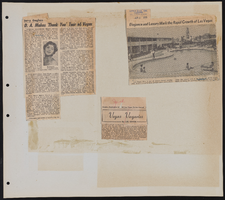Search the Special Collections and Archives Portal
Search Results
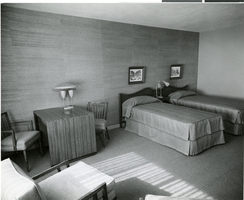
Photograph of interior of the Aqueduct at the Sands Hotel and Casino, Las Vegas, 1963
Date
Archival Collection
Description
Image
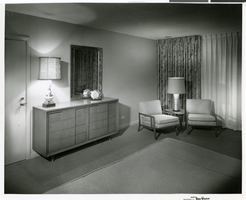
Photograph of interior of the Aqueduct at the Sands Hotel and Casino, Las Vegas, 1963
Date
Archival Collection
Description
Image
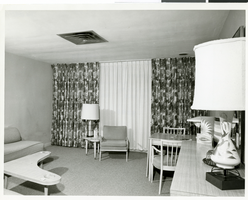
Photograph of interior of the Aqueduct at the Sands Hotel and Casino, Las Vegas, 1963
Date
Archival Collection
Description
Image
Lee, Rozita Villanueva, 1934-
Born in 1934 in Lahaina, Maui, Hawai'i as the seventh of seven daughters of a sugar plantation crew boss, Rozita Villanueva Lee recalls a privileged life, because when her father became a boss, the family got electricity, a telephone, indoor plumbing, and fluorescent lighting in their house. The camps were organized by nationality: the Filipino workers and their families lived in one camp, and the Japanese, Chinese, Portuguese, and "haole" workers and their families each lived in their own.
Person
DiTondo, Michelle, 1967-
Michelle DiTondo talks about her parent's experiences living in Osaka, Japan during the war. Father died after the war from tuberculosis. Her mother worked as a seamstress/tailor on the Air force base at the NCO club where she met Michelle's father. Michelle had moved from Tucson to Okinawa and then to Nellis in 1972. She would spend most of her childhood in North Las Vegas for more than 30 years. She speaks on her experience being in an air force family and moving from base to base as well as her fond memories of Las Vegas before casinos were built.
Person
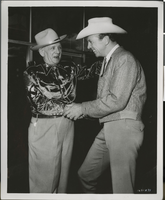
Photograph of Jake Friedman and Dan Dailey during the filming of "Meet Me in Las Vegas," Las Vegas, Nevada, circa 1955-1956
Date
Archival Collection
Description
Image
Kleven, Cherina, 1958-
Retired City of Las Vegas Assistant Fire Chief Cherina Kleven was born in Taiwan, the fifth of her parents' seven children and the first daughter. The family spoke Taiwanese at home, but once the children started school all instruction was in Mandarin Chinese. Her father was in charge of the motor pool for the U.S. Embassy, and her mother stayed home. In 1970, the family immigrated the U.S. and to Las Vegas, where her father could use his training as an electrician to work with air conditioners. Cherina attended Roy W.
Person
Henderson Public Library Photograph Collection on Henderson, Nevada
Identifier
Abstract
The Henderson Public Library Photograph Collection on Henderson, Nevada (approximately 1940-1988) depicts life and growth in Southern Nevada. The collection documents the growth of Henderson, Nevada through images of Basic Magnesium Incorporated, housing throughout the area, and events. The documentation of Basic Magnesium Incorporated, its activites, personnel, and buildings from 1942 through 1944 is prominent in this collection.
Archival Collection

